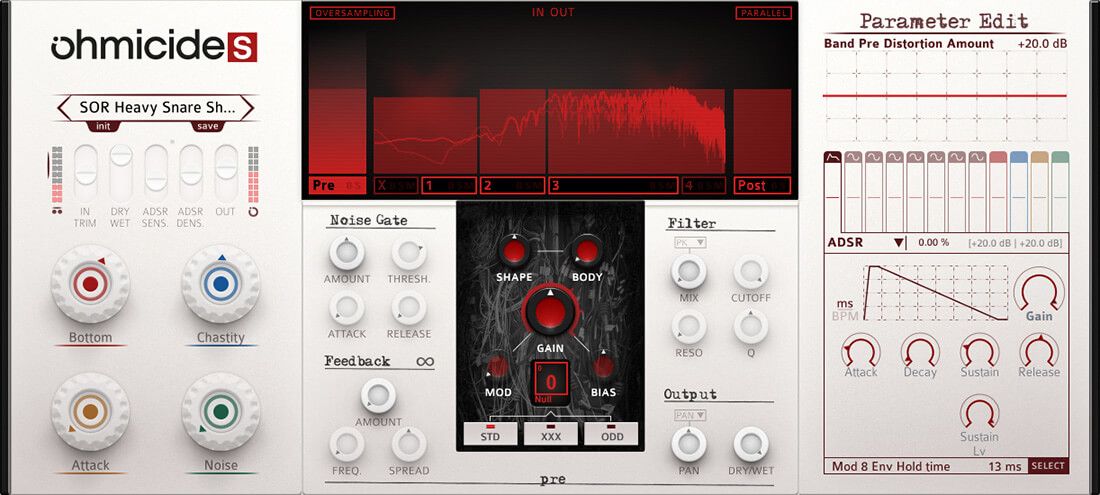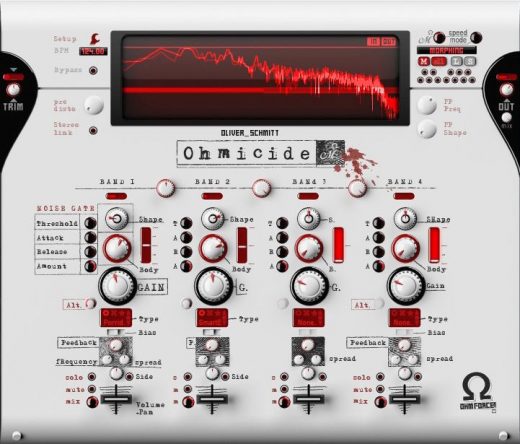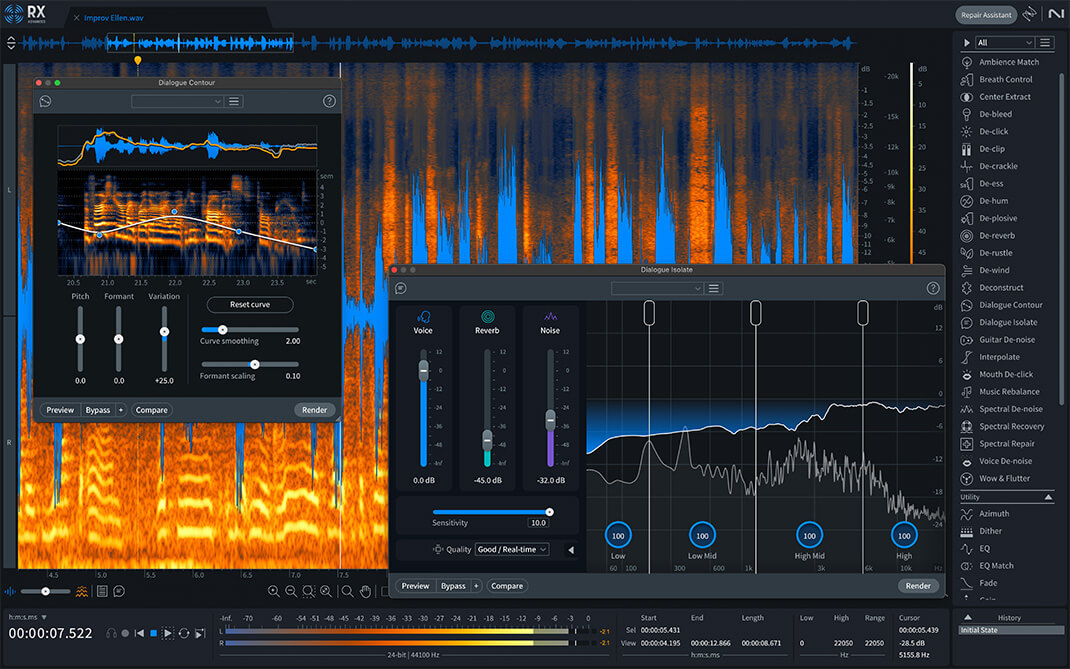Review Ohmforce Ohmicide S

As a sound designer, I’ve been using the original Ohmicide for well over a decade. It played a major role in shaping many of my sample packs. The plugin had this rare mix of raw aggression and detailed control that made it ideal for anything from subtle saturation to full-on audio destruction. Naturally, I was curious when Ohmicide S was announced. But after spending some time with it, I can say that it’s not just a remake. It’s a significant improvement in every way. You only need to scroll through a handful of presets, and boom – there it is. That wild, one-of-a-kind Ohmicide sound. Instantly recognizable!
Multi-Band Distortion, Reimagined
Ohmicide S offers up to three fully independent frequency bands, each with its own distortion engine. There are 87 algorithms in total, organized into categories like Analog, Digital, Fuzz, Glitch and Saturation. Each band also includes its own noise gate, dynamics, pan, mid-side processing, feedback and bandwidth modules. Thanks to the new pre and post routing matrix, you can freely rearrange these blocks to suit your workflow. That level of control simply didn’t exist in the original.
Modulation at the Core
One of the most significant changes is the addition of deep modulation. Every parameter in Ohmicide S can be modulated using LFOs, envelopes, random generators or macros. This takes distortion into a completely new territory. You can now create dynamic, evolving textures that move with your sound. I’ve already used this to generate modulated kicks, evolving atmospheres and subtle rhythmic shifts that would have been impossible with the old version.
Interface Changes and Why They Make Sense
As a long-time user, you might be disappointed by the switch to a tabbed interface, as not all bands are displayed at once. But I believe, with so many added controls and modules per band, having everything on one screen would be overwhelming. Ohm Force made smart decisions to keep things manageable. Tabs are always visible, you can scroll through them with the mouse wheel, and solo, mute or bypass for each band is just one click away. After a short adjustment period, the workflow actually feels faster. On top of that, the GUI itself feels clean, modern and well structured. I personally find it much more intuitive and visually pleasing than in version one. It just feels more contemporary and aligned with how plugins are designed today. What I would also like is if there was a dark theme – simply as a selectable addition.
The Macro² System
A completely new feature is the Macro² section, which includes four large macro knobs, each with dual-axis control. These can be assigned to multiple parameters at once, giving you expressive global control. I initially thought I wouldn’t use them much, but they’ve proven to be very helpful, especially when testing sounds or making quick, broad changes during production.

The original Ohmicide – a true legend since 2007
Preset Browser
One thing that always bugged me in the original version was the clunky and unintuitive preset selection – that’s finally been fixed. The new preset browser is a huge step forward. You can search, filter by tags (like Drum, Kick, Snare, Percussion, Hi-Hats, etc.), and mark your favorite patches. For sound designers dealing with large libraries, this is a massive time-saver. Even better: each preset now includes additional info, which I find genuinely helpful.
As simple as it sounds, just being able to step through presets with forward/backward buttons saves a ton of time and massively boosts the fun compared to v1.
In Practice
I’ve already integrated Ohmicide S into several production chains, including drums, synths and FX layers. The ability to go from subtle grit to completely broken, distorted chaos is still there, but now with a level of control and refinement that makes it much more versatile. The modulation system especially has changed how I approach distortion. You are no longer just coloring the signal. You are shaping movement, rhythm and tone over time.
I’m always amazed at how drastically different a sound can sound when you run it through Ohmicide. I also find the dynamic nature of the effect very interesting. A perfectly normal-sounding reverb in a Foley loop, for example, becomes something completely different – and the interesting thing is that you can still use the sound perfectly, which is often not the case with many distortion tools.
Verdict & Summary
Ohmicide S keeps the core spirit of the original but reinvents it with modern production needs in mind. For someone like me, who used the first version extensively, this feels like a proper next step. You get more power, better sound, deeper control and a workflow that makes complex setups easier to build and manage.
What really sets it apart is its character. Ohmicide S doesn’t just distort, it transforms. It has a distinct sonic identity that you won’t find in other distortion plugins. Whether you push it to extremes or use it in a more subtle way, it always adds something unique. That is rare and incredibly valuable when you’re trying to create sounds that stand out.
It’s not just another distortion plugin – it’s a full-on sound design instrument. It’s rare to find a plugin that’s this deep, this fun, and this musically usable right out of the box.
Ohmicide is back and better than ever, fully deserving of the Sounds of Revolution AWARD!

Visit my BLOG for other vst recommendations, production tips and more!
Cheers,
Oliver Schmitt aka Sounds of Revolution (SOR)






